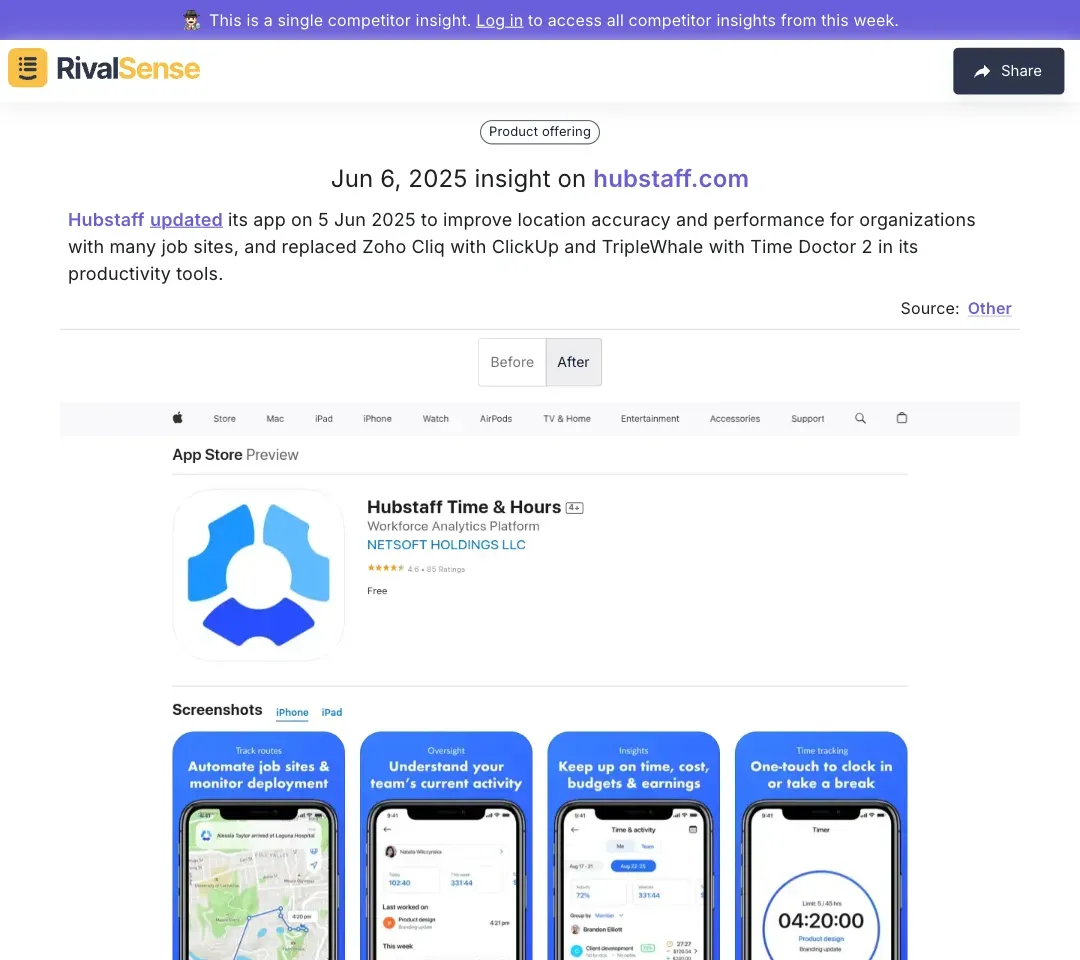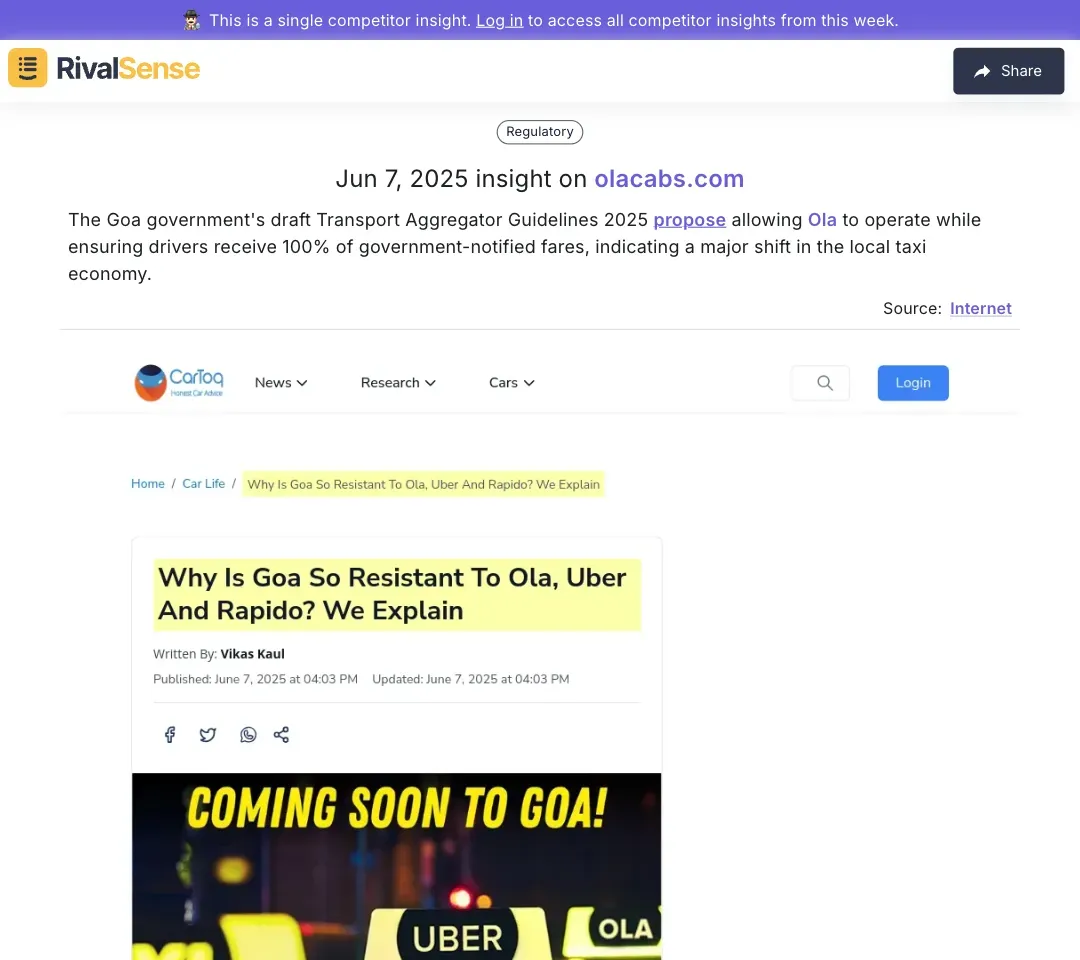Practical Competitive Intelligence for Leadership: A Step-by-Step Guide
- Introduction
- Setting Up Your CI Framework
- Practical Steps for Effective CI
- Advanced CI Techniques
- Integrating CI into Business Strategy
- Conclusion and Next Steps
Introduction
Competitive Intelligence is no longer a luxury but a necessity for businesses aiming to maintain a competitive edge. For leaders, understanding the landscape in which your business operates can mean the difference between leading the market and playing catch-up. This guide provides actionable steps to harness CI power, ensuring you're always strategically positioned.
Setting Up Your CI Framework
Establishing a robust framework is foundational before collecting data. Begin by identifying key competitors—including emerging disruptors that could reshape your market dynamics. Next, determine critical tracking aspects like product launches, pricing shifts, or executive movements.
Tools like RivalSense streamline this process by monitoring 80+ sources including websites, social media, and registries. Its automated weekly reports eliminate manual tracking, freeing leadership focus for strategic decisions.
Practical Steps for Effective CI
Integrating CI into routines shouldn't overwhelm your schedule. Break monitoring into manageable cadences to ensure consistency while maintaining strategic oversight. Regular tracking reveals patterns competitors hope you'll miss.
✅ Actionable Checklist
- Daily: Scan competitor social media for campaign clues
- Weekly: Review product/pricing changes (e.g., RivalSense detected Hubstaff's June 5 app update improving location accuracy while switching productivity tools)
- Monthly: Analyze partnership announcements

Why it matters: Tracking tech stack changes like Hubstaff's shift from Zoho Cliq to ClickUp reveals operational priorities and potential vendor vulnerabilities.
Advanced CI Techniques
Beyond basic monitoring, advanced CI uncovers strategic opportunities hidden in market shifts. Leadership changes often signal new directions, while regulatory developments create first-mover advantages for alert businesses.
For example, RivalSense captured Igors Petrovs joining nectaro as Board Member/Head of Risk alongside an Auto-Invest interest rate increase. Such dual insights connect leadership appointments with tactical moves.

Why it matters: Executive tracking anticipates strategic pivots—here, a compliance hire paired with financial product tweaks suggests strengthened risk governance.
Similarly, monitoring regulations like Goa's 2025 Transport Aggregator Guidelines (ensuring 100% driver fares for Ola) reveals market restructuring opportunities.

Why it matters: Regulatory alerts help preempt operational impacts—here, fare structures affecting gig-economy profitability.
Integrating CI into Business Strategy
The true CI value emerges when insights inform core strategy. Translate competitor moves into your forecasting and risk models. If rivals consistently target a niche, it may indicate untapped demand or emerging threats.
Consider these integration tactics:
- Map competitor feature launches against your roadmap
- Model pricing changes in financial projections
- Turn executive departures into talent acquisition opportunities
Conclusion and Next Steps
Effective CI transforms reactive leadership into proactive strategy. By implementing these steps, you'll convert competitor data into decisive advantages. The future belongs to leaders who automate intelligence gathering for real-time decision-making.
Ready to operationalize CI?
→ Try RivalSense free to get your first competitor report today. Track product launches, pricing shifts, regulatory changes, and leadership moves—all delivered in actionable weekly insights.
Related Posts
- Advanced Strategies for Market Analysis
- A Quick Primer on Competitive Benchmarking
- Mastering the Art of Strategic Planning
📚 Read more
👉 Unlocking Resilience: E-commerce Competitor Recovery Analysis and Case Studies
👉 How inDrive's Leadership Shift Empowered Binghatti's Tech Edge
👉 Tracking Indirect Competitors Through Website Changes
👉 How BetterMe Dominated the Health App Market Using Competitor Intelligence
👉 5 Actionable Strategies to Leverage Competitor Insights from Events
